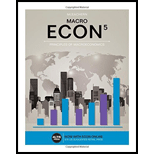J Chapter 03 Homework HOME PROFILE ORDERS RENTALS When a country has a comparative advantage in the production of a good, it means that it can produce this good at a lower opportunity cost than its trading partner. Then the country will specialize in the production of this good and trade it for other goods. The following graphs show the production possibilities frontiers (PPFS) for Yosemite and Rainier. Both countries produce peas and basil, each initially (i.e., before specialization and trade) producing 30 million pounds of peas and 15 million pounds of basil, as indicated by the grey stars marked with the letter A. EI COURSES Study Tools College Success Tips Career Success Tips Help BASIL (Millions of pounds) 80 60 PPF 50 20 288 28 & 2 70 40 Yosemite BASIL (Millions of pounds) 80 70 60 30 PPF 20 10 Rainier →SIGN OUT 0 0 0 10 20 30 40 50 60 70 80 0 10 20 40 30 50 60 70 80 PEAS (Millions of pounds) PEAS (Millions of pounds) Yosemite has a comparative advantage in the production of production of Suppose that Yosemite and Rainier specialize comparative advantage. After specialization, the two countries can produce a total of peas. while Rainier has a comparative advantage in the in the production of the goods in which each has a million pounds of basil and million pounds of Suppose that Yosemite and Rainier agree to trade. Each country focuses its resources on producing only the good in which it has a comparative advantage. The countries decide to exchange 20 million pounds of peas for 20 million pounds of basil. This ratio of goods is known as the price of trade between Yosemite and Rainier.
J Chapter 03 Homework HOME PROFILE ORDERS RENTALS When a country has a comparative advantage in the production of a good, it means that it can produce this good at a lower opportunity cost than its trading partner. Then the country will specialize in the production of this good and trade it for other goods. The following graphs show the production possibilities frontiers (PPFS) for Yosemite and Rainier. Both countries produce peas and basil, each initially (i.e., before specialization and trade) producing 30 million pounds of peas and 15 million pounds of basil, as indicated by the grey stars marked with the letter A. EI COURSES Study Tools College Success Tips Career Success Tips Help BASIL (Millions of pounds) 80 60 PPF 50 20 288 28 & 2 70 40 Yosemite BASIL (Millions of pounds) 80 70 60 30 PPF 20 10 Rainier →SIGN OUT 0 0 0 10 20 30 40 50 60 70 80 0 10 20 40 30 50 60 70 80 PEAS (Millions of pounds) PEAS (Millions of pounds) Yosemite has a comparative advantage in the production of production of Suppose that Yosemite and Rainier specialize comparative advantage. After specialization, the two countries can produce a total of peas. while Rainier has a comparative advantage in the in the production of the goods in which each has a million pounds of basil and million pounds of Suppose that Yosemite and Rainier agree to trade. Each country focuses its resources on producing only the good in which it has a comparative advantage. The countries decide to exchange 20 million pounds of peas for 20 million pounds of basil. This ratio of goods is known as the price of trade between Yosemite and Rainier.
Chapter2: Productions Possibilities, Opportunity Costs, And Economic Growth
Section: Chapter Questions
Problem 9SQ
Question
Don't use
Answer in step by step with explanation.

Transcribed Image Text:J
Chapter 03 Homework
HOME
PROFILE
ORDERS
RENTALS
When a country has a comparative advantage in the production of a good, it means that it can produce this good at a lower opportunity cost than its
trading partner. Then the country will specialize in the production of this good and trade it for other goods.
The following graphs show the production possibilities frontiers (PPFS) for Yosemite and Rainier. Both countries produce peas and basil, each initially
(i.e., before specialization and trade) producing 30 million pounds of peas and 15 million pounds of basil, as indicated by the grey stars marked with
the letter A.
EI COURSES
Study Tools
College Success Tips
Career Success Tips
Help
BASIL (Millions of pounds)
80
60
PPF
50
20
288 28 & 2
70
40
Yosemite
BASIL (Millions of pounds)
80
70
60
30
PPF
20
10
Rainier
→SIGN OUT
0
0
0
10
20
30 40 50 60
70
80
0
10
20
40
30
50 60
70 80
PEAS (Millions of pounds)
PEAS (Millions of pounds)
Yosemite has a comparative advantage in the production of
production of
Suppose that Yosemite and Rainier specialize
comparative advantage. After specialization, the two countries can produce a total of
peas.
while Rainier has a comparative advantage in the
in the production of the goods in which each has a
million pounds of basil and
million pounds of
Suppose that Yosemite and Rainier agree to trade. Each country focuses its resources on producing only the good in which it has a comparative
advantage. The countries decide to exchange 20 million pounds of peas for 20 million pounds of basil. This ratio of goods is known as the price of
trade between Yosemite and Rainier.
Expert Solution
This question has been solved!
Explore an expertly crafted, step-by-step solution for a thorough understanding of key concepts.
Step by step
Solved in 2 steps

Recommended textbooks for you









Essentials of Economics (MindTap Course List)
Economics
ISBN:
9781337091992
Author:
N. Gregory Mankiw
Publisher:
Cengage Learning